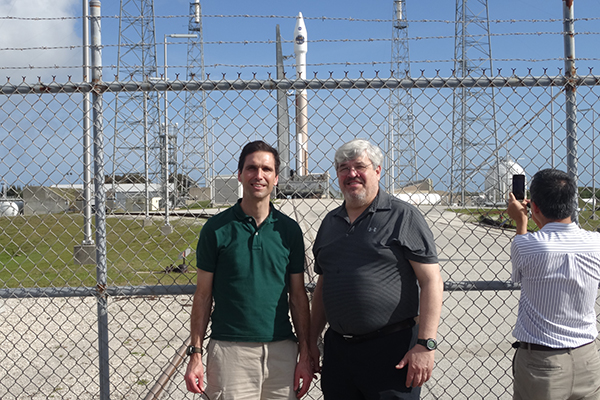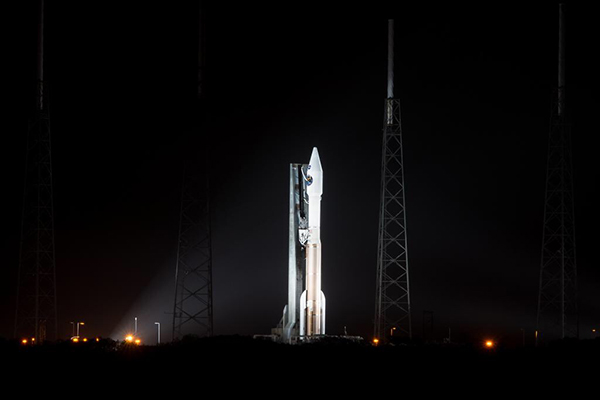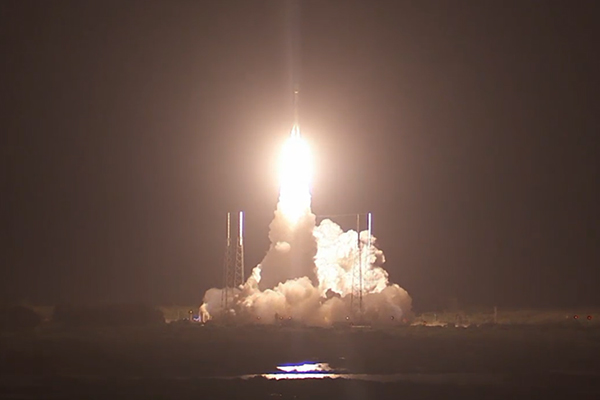


NASA mission update
Four satellites now in orbit collecting data on magnetic reconnection
11:28 a.m., March 13, 2015--University of Delaware physicists William Matthaeus and Michael Shay were onsite Thursday night, March 12, to see the long-awaited launch of NASA's MMS mission.
The Magnetospheric Multiscale mission launched on time at 10:44 p.m. and four identical satellites, each with 25 data-capturing sensors, now are in orbit together and soon will collect what scientists say is unprecedented information about the magnetic fields of the Earth and the sun. A video of the launch can be viewed on NASA's website.
Research Stories
Chronic wounds
Prof. Heck's legacy
Instruments will be tested and positioned over the next several weeks and the satellites then will orbit in formation, transmitting high-value scientific data starting in September, according to NASA. But some transmissions may arrive from the satellites as early as next week, Matthaeus said early Friday in an email from Cape Canaveral.
The heart of the mission is the phenomenon known as magnetic reconnection, a powerful and rapid explosive process that results when two magnetic connect and break apart. Scientists have evidence of the process and have simulated it, but have never seen it happen.
The MMS mission has the speed and technology necessary to capture high-resolution images and copious amounts of data by which scientists will judge their theories and simulations and learn more about magnetic interactions throughout space.
Matthaeus and Shay, professors in UD’s Department of Physics and Astronomy, have been part of planning and research for the mission for more than a decade. For more information, see the March 11 UDaily article.
"After a decade of planning and engineering, the science team is ready to go to work,” said Jim Burch, principal investigator for the MMS instrument suite science team at the Southwest Research Institute in San Antonio, in a prepared statement. “We’ve never had this type of opportunity to study this fundamental process in such detail.”
Article by Beth Miller
Photos courtesy of Bill Matthaeus and NASA










